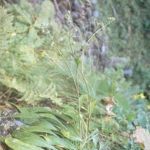| Common Name: |
Nard |
| Other Names: |
Spikenard, Jatamansi |
| Botanical Name: |
Nardostachys grandiflora |
| Genus: |
Nardostachys |
| Family: |
Valerianaceae |
| Native Location: |
Himalayas, from Himachal Pradesh to Nepal, Sikkim, Bhutan, Tibet, and W China |
| Cultivation: |
Well-drained, gritty, moisture-retentive soil in partial shade from midday sun. Needs a cool root run. Dislikes rich soil. May be grown as an alpine in a deep clay plot. |
| Propagation: |
By seed sown when ripe; by division in spring; by cuttings of rhizomes in late winter. Requires light for germination. |
| Harvest: |
Roots are dried for oil distillation or use in decoctions. |
| Height: |
10-60cm (4-24in) |
| Width: |
20-30cm (8-12in) |
| Hardiness: |
Z7-9 |
| Parts Used: |
Roots, oil |
| Properties: |
A bitter, astringent, aromatic herb that improves digestion, calms the nerves, relaxes spasms, and lowers blood pressure. |
| Medicinal Uses: |
Internally for nervous indigestion, insomnia, depression, and tension headaches. Externally for rashes and as a deodorant. |
| Economic Uses: |
Oil is used in perfumery |
| Bibliography: |
Encyclopedia of Herbs by Deni Brown Copyright © 1995, 2001 Dorling Kindersley Limited Pg 286 |

